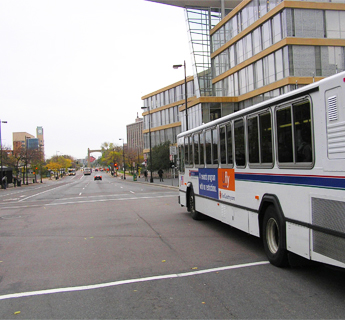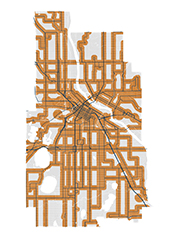Access to Employment: Support employment growth downtown and in places well-served by public transportation.

The Minnesota Department of Employment and Economic Development estimates that Minneapolis had 318,500 jobs in 2015, and the Metropolitan Council projects that the City’s employment will grow by 41,500 by 2040. Much of this job growth will happen in downtown Minneapolis, which is appropriate given the role of the central business district as the economic and transportation hub of the region. Growing employment downtown will require continued investment in the multimodal transportation system that makes downtown accessible to workers. It also means ensuring that land downtown is used as efficiently as possible.
Outside of downtown, non-production employment growth should be focused on areas well-served by public transportation. The City should continue to support large employers such as hospitals, universities, and cultural institutions, while ensuring that expansions of those facilities do not inhibit progress on other plan goals, including increasing the supply of housing.
The Future Land Use and Built Form maps allow greater development intensities in these areas that have or will have frequent and fast transit connections through the following actions:
 |
Increase access to employment by allowing a variety of jobs-producing uses on select public transit routes, with higher densities along high-frequency routes and near METRO stations. |
 |
Increase access to employment by allowing the highest concentration of jobs-producing uses in and near Downtown. |
 ACTION STEPS
ACTION STEPS
The City will seek to accomplish the following action steps to support employment growth downtown and in places well-served by public transportation.
- Establish minimum development densities for downtown and areas served by regional transit lines to ensure that enough land is available to accommodate projected employment growth.
- Continue to allow office and institutional uses where they currently exist throughout the city.
- Guide new office and institutional uses to locations well-served by public transportation.
- Encourage large medical, educational, and cultural institutions to grow within their existing footprint, especially where territorial expansion would result in a reduction of housing stock.

